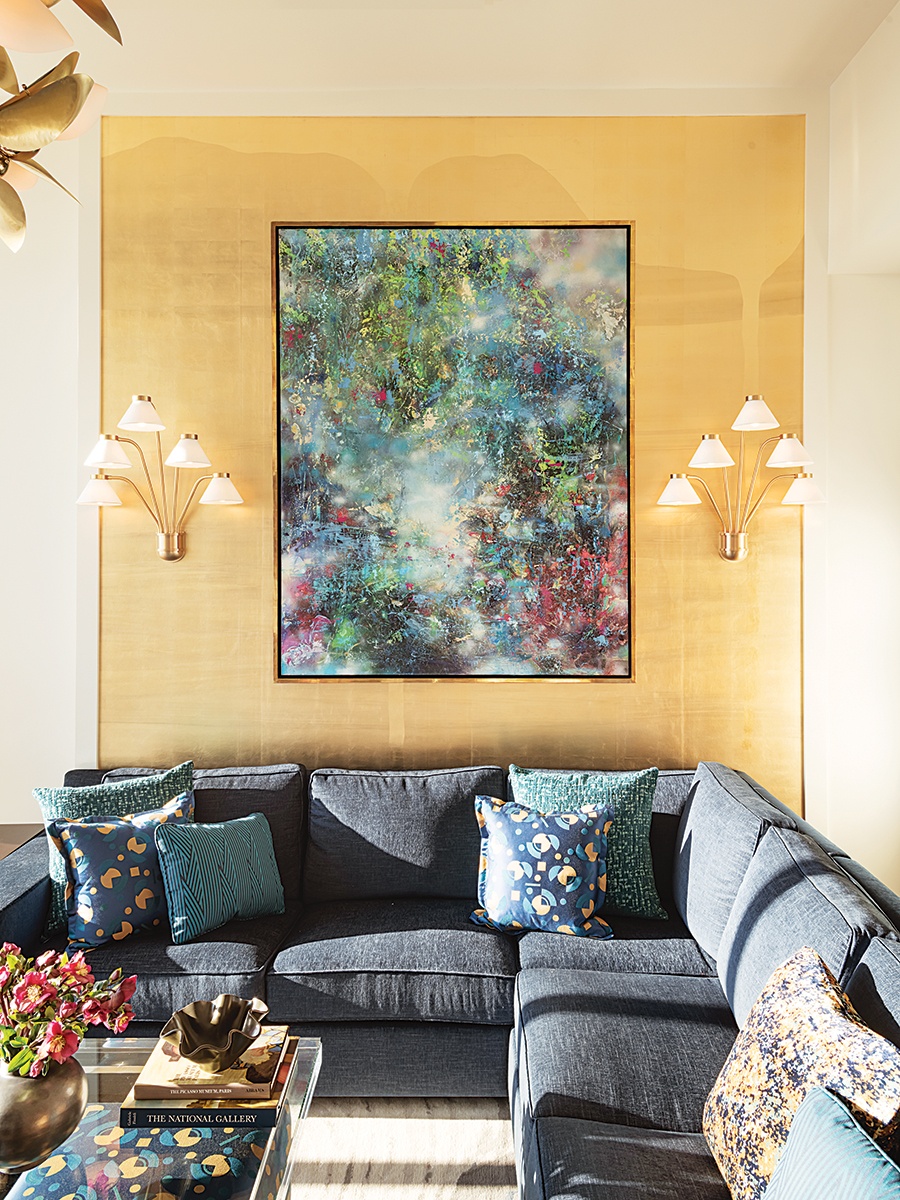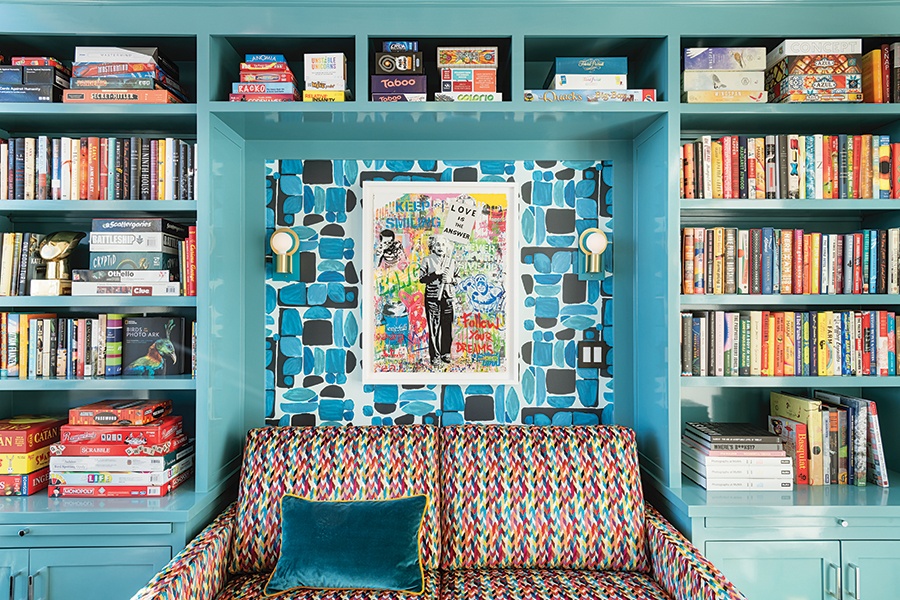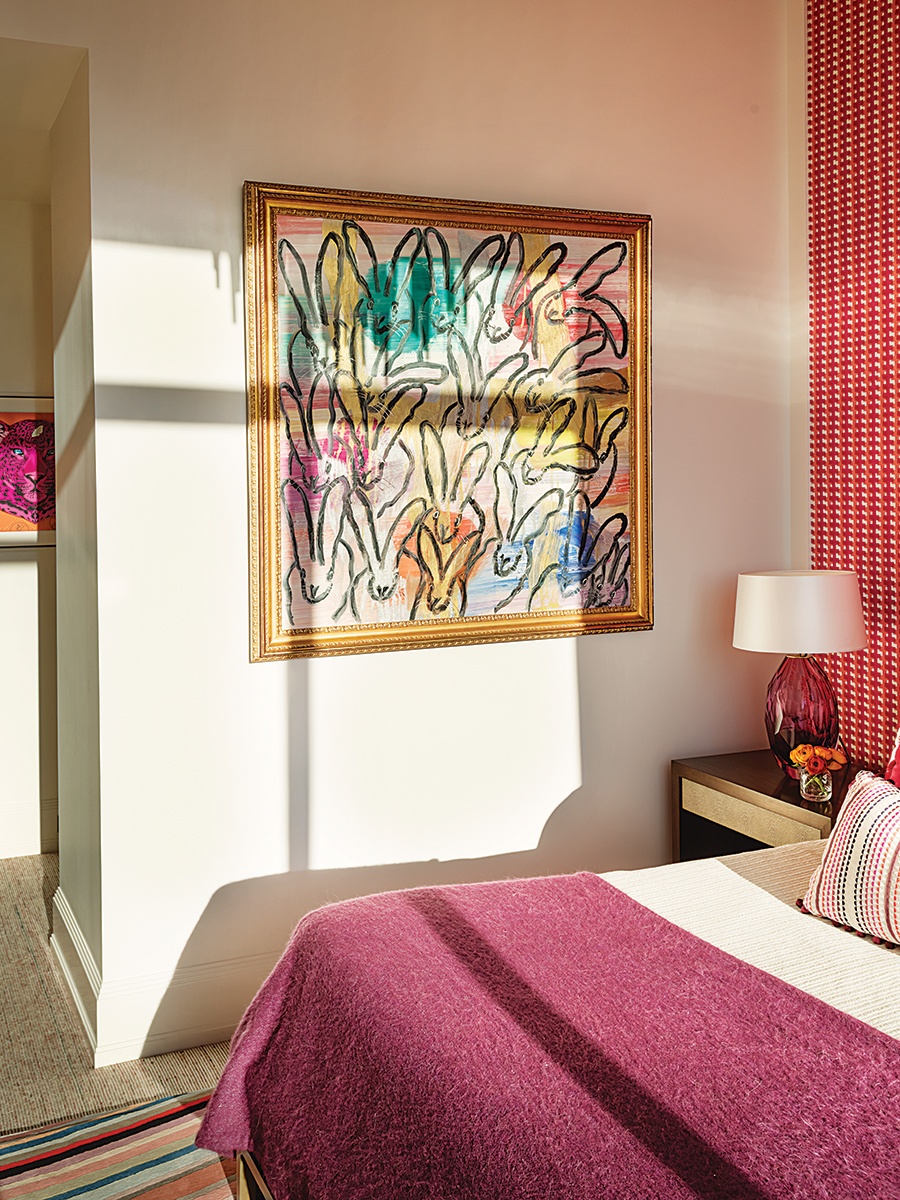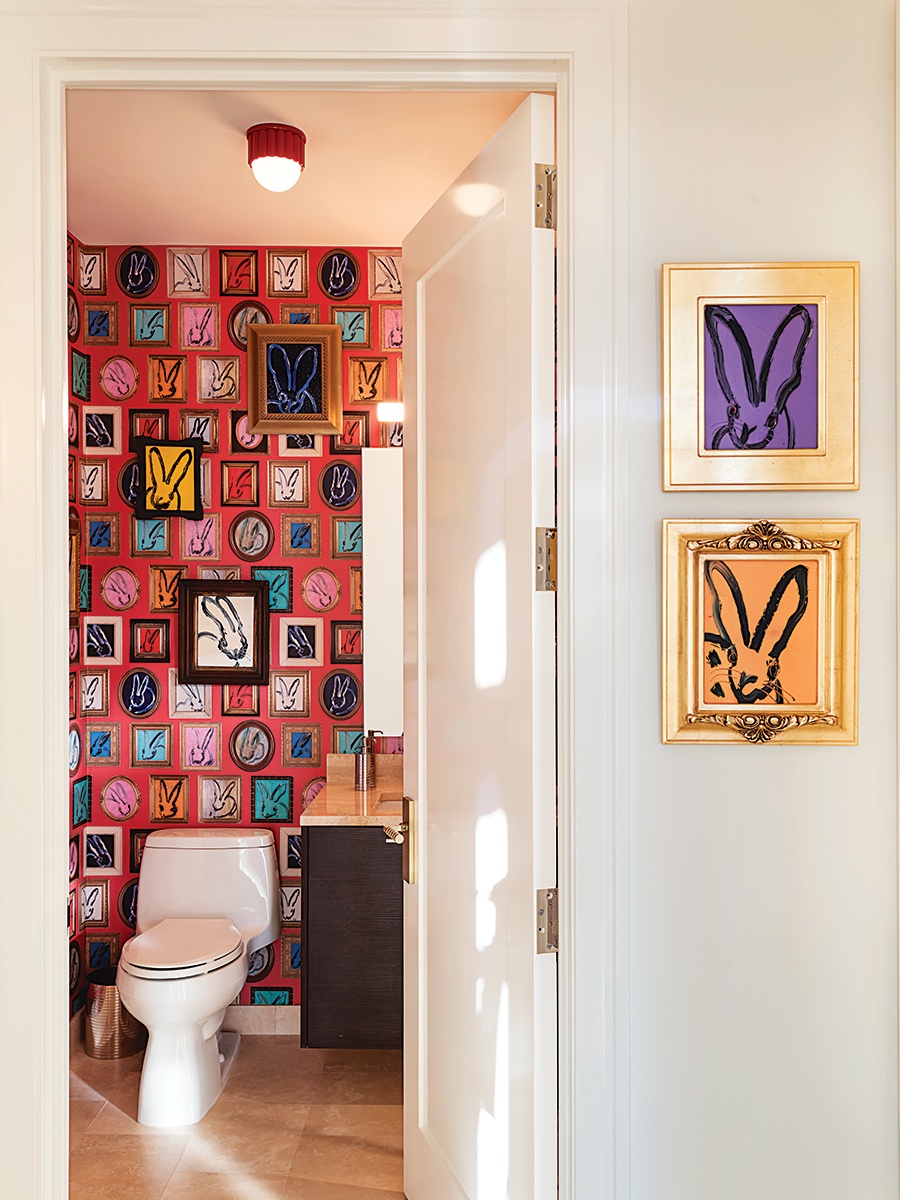This Boston Art Collector Leaves No Stone (Or Canvas) Unturned
Her deep dive includes examining every work, both available and sold, that she can find online.

“I never considered buying Matisse,” the owner of this Boston condo says, referencing the fauvist pochoir (“stencil” in French) prints. “The colors drew me in.” In contrast, the Tolla Inbar bronze sculpture of a woman perched atop a tower of books, which is placed on a pedestal to elevate it further, spoke to the owner and her husband’s love of reading and the value they place on education. / Photo by Matthew Williams / Styling by Kate C. Sheppard/Anchor Artists
When it comes to making a significant art purchase, the owner of this Boston condo leaves no stone—or canvas—unturned. “I love to learn about an artist’s childhood, education, and passions,” she says. Her deep dive includes examining every work, both available and sold, that she can find online. But that zeal has cost her: After falling in love with two Bruno Zupan paintings she’d spotted on a postcard from Galerie d’Orsay, the homeowner discovered the pair had sold instantly. “I learned that you can’t always sit and think for a few weeks,” she says ruefully.
She’s also learned that virtual pursuits can only get you so far. For instance, after spending countless hours looking at neo-expressionist artist Hunt Slonem’s paintings of bunnies, many of which are at galleries in Texas, she sought out art consultant Julie Mussafer of Jules Place and found a local source: DTR Modern on Newbury Street. Turns out, “They have bunnies galore,” says the homeowner. So the pair happily spent an afternoon at the gallery, mixing and matching rabbits in a variety of shades—pink, purple, and blue among them—with antique frames to determine which combinations would look best. (She ended up with more than a dozen, in assorted colors.)
And on occasion, her research unearths additional treasures. While perusing a Texas gallery’s Slonem collection online, the homeowner became intrigued by the mixed-media paintings of German artist Claudia Limacher, whom the gallery also represents. When she showed her husband six options, “The one he chose was also my favorite,” she says with a smile. The abstract is now the centerpiece of the couple’s family room.

Disappointed to discover that two Bruno Zupan paintings she loved had already sold, the homeowner commissioned Zupan to create paintings similar to her favorites. “Of course, he put a different twist on these,” she says. The works’ primary colors tie in the couple’s collection of brightly colored glassware. / Photo by Matthew Williams / Styling by Kate C. Sheppard/Anchor Artists

Knowing they wanted an abstract as the centerpiece of the family room, the couple chose In the Moment by Claudia Limacher. “You think at first it’s a landscape or flowering tree, and then linger on it and it almost feels like the wind or even a black hole is pulling you into the center of the composition,” the wife says. “It makes me so happy that it is large in scale [because it creates a] very dramatic impression when you enter the room.” / Photo by Matthew Williams / Styling by Kate C. Sheppard/Anchor Artists

The couple looked “long and hard” for artwork to fill the niche in the den before landing on Einstein by Banksy disciple Mr. Brainwash. The work’s nod to pop artists prompted the homeowner to learn more about the likes of Jean-Michel Basquiat, Keith Haring, and Roy Lichtenstein. Another selling point? “I love its positivity,” she says. / Photo by Matthew Williams / Styling by Kate C. Sheppard/Anchor Artists

Hunt Slonem’s Chinensis Monday provides this bedroom with a big punch of color and whimsy. The homeowner, who had a pet rabbit as a kid, appreciates that the bunnies’ personalities shine through. “Their eyes and even their stances are emotional when you see them up close,” she marvels. / Photo by Matthew Williams / Styling by Kate C. Sheppard/Anchor Artists

After noticing the couple’s Hunt Slonem painting of parrots, interior designer Courtney Taylor suggested using his “Bunny Wall” wallcovering in the powder room, then layering single Slonem bunny paintings atop it. That each bunny has a human name helped the homeowner choose. “We have a pink sparkly one named Pam, and I have a sparkly friend named Pam, so that was easy,” she says with a laugh. / Photo by Matthew Williams / Styling by Kate C. Sheppard/Anchor Artists

Illustration by Naomi Elliott
Start With Art
Susan Lanoue, co-owner of SoWa’s Lanoue Gallery, shares advice—cultivated from her decades of experience—on how to start your own art collection.
By Rachel Kashdan
Get in touch with your tastes.
The first item that should be on every new collector’s agenda: homing in on what styles of art and mediums you’re drawn to. “Go to galleries, attend art sales in your area, look at home design magazines, and see what excites you,” Lanoue says.
Build relationships with local gallerists.
Not only will you feel more confident knowing you’ve got a trusted source for quality pieces, but you’ll also benefit from greater access to works beyond the gallery floor. For example, if you’ve expressed an interest in a particular artist and have a longstanding relationship with the gallery, you’ll be the first person they call when “the next awesome piece comes in,” Lanoue explains.
Don’t try to haggle.
While you might have read or heard that gallerists and artists at open studios or fairs expect buyers to try to negotiate down prices, Lanoue says that’s often not the case—particularly for an emerging or mid-career artist. “That is not a given in the industry, and it can be somewhat insulting,” she says.
Harness the power of Instagram.
The app is one of the best ways to discover up-and-coming and under-the-radar artists from all over the world. “Instagram is the great equalizer [in the art world]. Instead of just sending a monthly e-blast, galleries, artists, and auction houses are posting things that are interesting and exciting every single day,” Lanoue explains. “It’s sort of like having your own little art adviser in your back pocket.”


